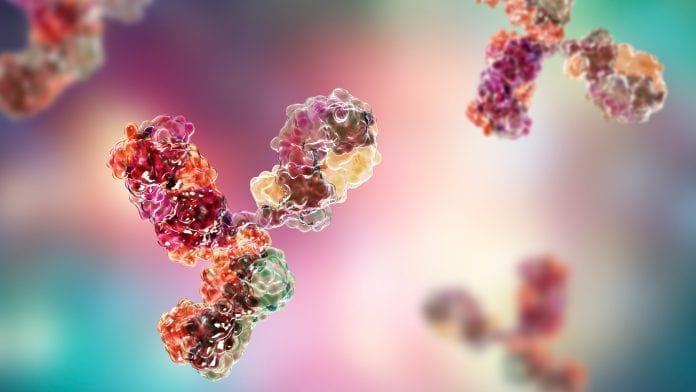
A new digital tool is being rolled out in the UK that will make developing medicines cheaper, safer, and faster.
In a vital step for the development of new medicines, the cutting-edge digital tool, called Quantitative Understanding of Bio-molecular Edge-Shift (QUBES) and developed by scientists at the University of Bath, will enable pharmaceutical companies to predict protein stability in a more cost-efficient manner.
The tool, which will help researchers identify the most promising protein molecules for drug development, is being rolled out through the scientists’ spin-out company at the university, BLOC Labs.
Monoclonal antibodies
The tool has the potential to play an important role in the creation of monoclonal antibodies (mAbs), which are a type of protein derived from natural antibodies and then refined and mass produced in the lab. These antibodies are steadily transforming the way diseases are treated and prevented, including diseases such as cancer, conditions affecting the immune system, and viral infections.
The current pandemic has raised interest in mAbs, as several protein candidates are showing promise as therapies to treat COVID-19.
Only mAbs that are known to be stable, i.e., they neither break down easily nor clump together to form toxic compounds, are suitable for development, and finding a stable candidate adds massively to the cost and time of finding new drugs.
This new digital tool is able predict the stability of proteins with startling speed and accuracy.
Dr Chris Pudney, from the University’s Department of Biology & Biochemistry and developer of QUBES, said: “We’re really excited by the potential of QUBES because it can be used immediately in the biopharmaceutical industry in quality assurance, formulation and development.
“Proteins are notoriously unstable for a good reason – the body wants to recycle them constantly. But with a therapeutic product, you need stability – if a protein breaks down and aggregates, it becomes toxic. Finding stable proteins is hugely expensive for pharmaceutical companies, but using our tool to find the best molecule possible will cut down on the time and cost of development massively.”
QUBES
QUBES works by allowing researchers to accurately ‘fingerprint’ a protein’s structure and predict stability under nearly any condition of concentration or formulation by using fluorescence to map protein structure. It then applies a mathematical algorithm, based on the position and type of the protein’s atoms, to calculate stability.
Using an online suite of software, laboratories can interpret their fluorescent data from anywhere in the world, using equipment found in most biochemistry labs without modifications.
Dr Pudney said: “Proteins contains tryptophan – an amino acid that emits fluorescent light. Every protein molecule has a unique fluorescent signature, and QUBES leverages this optical phenomenon, applying mathematical techniques to analyse and interpret the fluorescence.
“The software suite takes this academic work and makes it incredibly easy for people to use. You can run it on any machine – even on your mobile phone. It’s ultra-rapid and ultra-easy, and it offers an incredibly high level of security – in fact, we have a grade of security that’s normally reserved for the financial service industry.
“Not only is our approach faster, more accurate, and more sensitive than anything else on the market, but it can also predict stability at any concentration and in any formulation – unlike other tools on the market, which require set conditions.”
Dr Alex Jones, who led the study at NPL, said: “We tested the QUBES approach using a range of analytical methodologies and found that it tracks subtle changes in protein structure and stability with remarkable sensitivity when compared to established methodologies. The approach is fast and simple to implement.”










